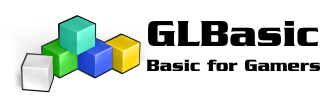Hi,
I'm still struggeling in havin a GLB-App as reusable (ios) component.
My goal is to have an iOS - app that uses the handy functions of GLB but can be used in a "normal" xcode project. So you just would add the compiled libs from glb to your project and could have the (glb-)output on a (say) viewcontroller. As I understand so far the main.m that is generated returns a UIApplication-instance. I understand this is a singleton and so I cannot simply call main from somewhere else in my code. Is there a chance to change this (returning UIApplication)? I'd rather use the "normal" main.m instead and just create a (say) GLKit-View once I need it, and then pass this instance to GLB, so that the GLB-Output will go there?
If this is not possible, a workaround for me could be an architecture that uses the "custom sceme" variant: My "main"-App calls the "glb-App" via custom-sceme. I understand this should be possible by now, reading threads
http://www.glbasic.com/forum/index.php?topic=7974.0#top and
http://www.glbasic.com/forum/index.php?topic=7924.0
so I could just "shell out" to the glb-app (using the customsceme of the glb app) with an identifer (say the custom-sceme of the main-app) as a query-param. Then the glb-App is doing it's job and once finished calls the main app via the custom-sceme that was delivered before. But: How can I achive the latter? Is there a way to call a custom-sceme in GLB?
Is there anyone having a better idea?
Thanx in advance for any hint or idea
Det
I'm still struggeling in havin a GLB-App as reusable (ios) component.
My goal is to have an iOS - app that uses the handy functions of GLB but can be used in a "normal" xcode project. So you just would add the compiled libs from glb to your project and could have the (glb-)output on a (say) viewcontroller. As I understand so far the main.m that is generated returns a UIApplication-instance. I understand this is a singleton and so I cannot simply call main from somewhere else in my code. Is there a chance to change this (returning UIApplication)? I'd rather use the "normal" main.m instead and just create a (say) GLKit-View once I need it, and then pass this instance to GLB, so that the GLB-Output will go there?
If this is not possible, a workaround for me could be an architecture that uses the "custom sceme" variant: My "main"-App calls the "glb-App" via custom-sceme. I understand this should be possible by now, reading threads
http://www.glbasic.com/forum/index.php?topic=7974.0#top and
http://www.glbasic.com/forum/index.php?topic=7924.0
so I could just "shell out" to the glb-app (using the customsceme of the glb app) with an identifer (say the custom-sceme of the main-app) as a query-param. Then the glb-App is doing it's job and once finished calls the main app via the custom-sceme that was delivered before. But: How can I achive the latter? Is there a way to call a custom-sceme in GLB?
Is there anyone having a better idea?
Thanx in advance for any hint or idea
Det

 )
)